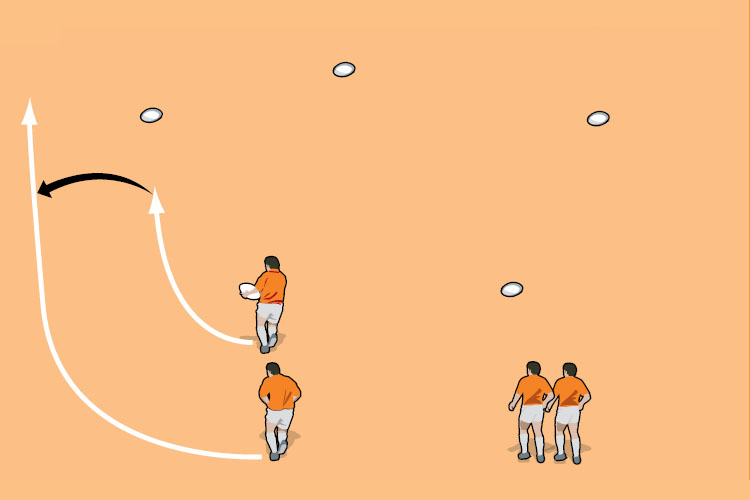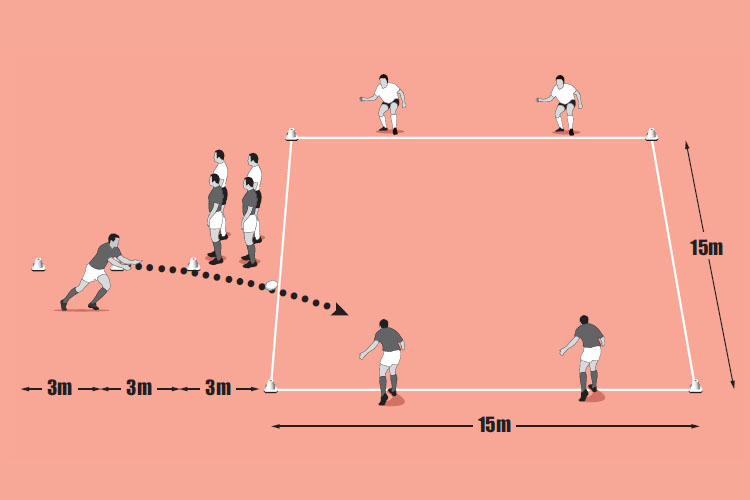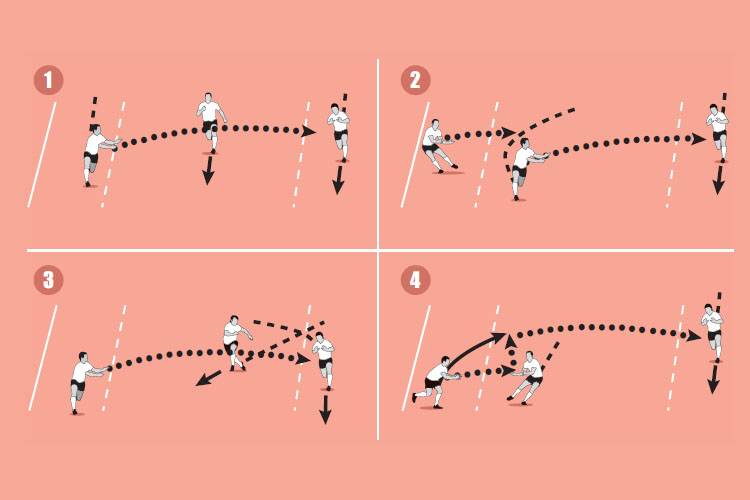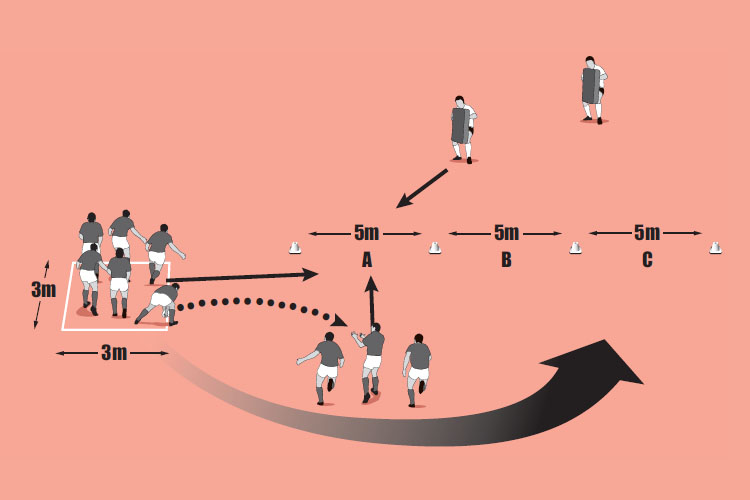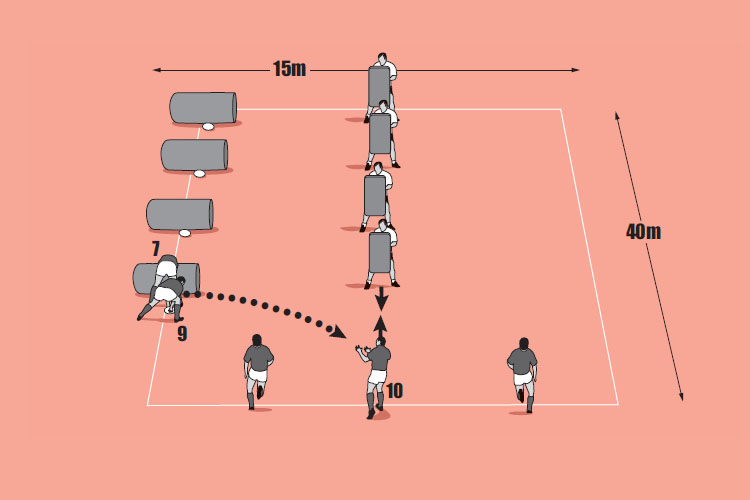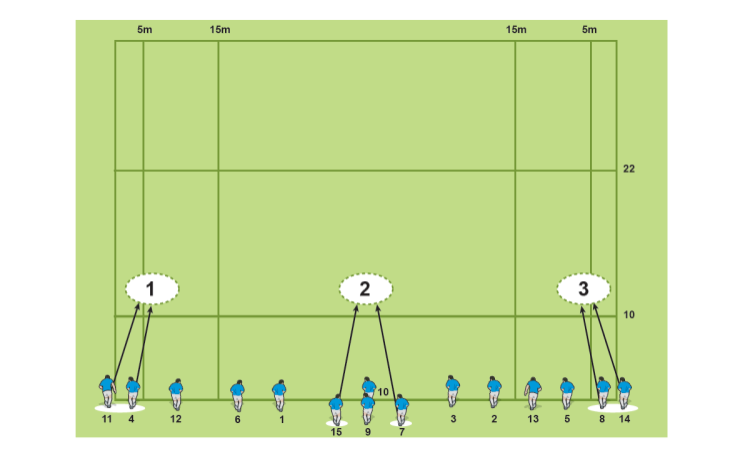You are viewing
1 of your 2 free articles
How can it be that simple?
Create more 2 v 1 opportunities with the simple tactic developed in this session. When I have used it, my players have been amazed at how easy it can be to isolate a defender and then beat him. The tactic works especially well from rucks, even slow ones.
Warm up time: 7-10
Session time: 10-15
Development time: 10-15
Game time: 10-15
Warm down time: 7-10
What to think about
Your team needs a call to let everyone know that the player at the back of the ruck is going to break. For instance, he might shout “cowboy” to pick and run blind and “hammer” to go open. The player who makes the break needs to know that his support is in place. The ball carrier’s run should start at an angle, but it is essential that they quickly straighten up to draw a defender. This creates the space for the receiver and hence the 2 v 1.set-up
- One player must always be directly behind the player in the scrum half position at the ruck.
- Pick and break to one side, fixing a defender and passing to the support player.
What you get your players to do
Split your players into pairs and spread several balls over the practice area. Have one player (the “passer”) move to one of the balls and stand over it, with the other player (the receiver) three to four metres directly behind. The passer picks up the ball and attacks by sweeping out to the side on an arcing run. The receiver follows and sweeps out wider to take a pass at full pace. The receiver puts the ball down and the passer selects another ball from which to repeat the exercise. Then, the next pair do the exercise.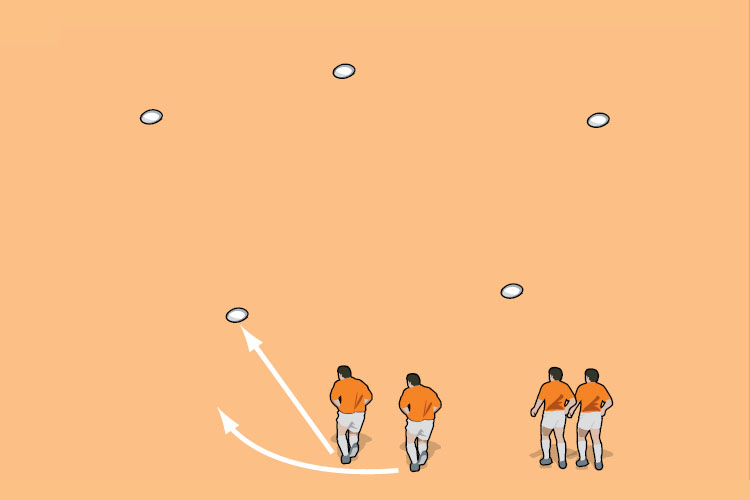
Development
- Add four extra attackers and do a similar exercise. The first player to the ball falls as if tackled and presents the ball. Three players secure possession at the conditioned ruck and the final two sweep out.
- Add six opposition players. Play conditioned touch rugby where a touched player goes to ground before the teams compete for the ball on the ground.
- Walk through some options for the player at the back of the ruck to explore. For instance, attacking the blindside or taking contact with a support player to drive through.
Related Files
Game situation
Split into two teams of eight players. Use touch tackles, but have the tackled player drop and present the ball. Two support players must come in and secure the ball, before it is cleared away. By adopting the deep support player alignment, the player at the back of the ruck has options of breaking blind and creating an overlap, or to break with the knowledge he has a deep, close support player to help.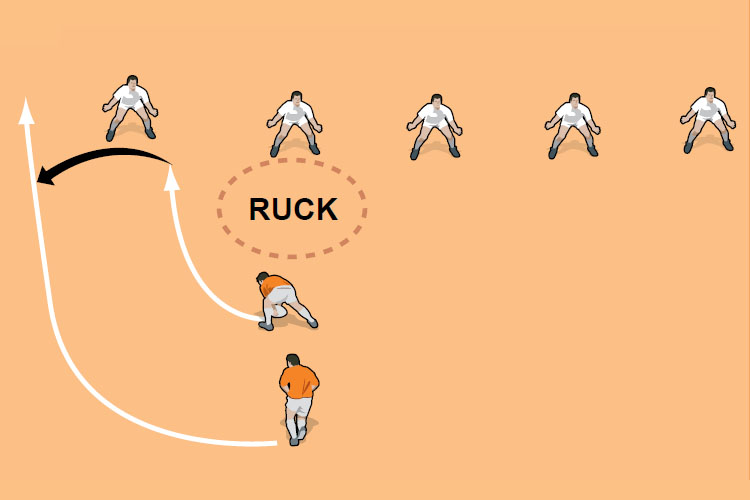
What to call out
- “Get deep and sweep”
- “Draw and pass”
- “Link with your support”
Newsletter Sign Up
Coaches Testimonials

Gerald Kearney, Downtown Las Vegas Soccer Club

Paul Butler, Florida, USA

Rick Shields, Springboro, USA

Tony Green, Pierrefonds Titans, Quebec, Canada
Subscribe Today
Be a more effective, more successful rugby coach
In a recent survey 89% of subscribers said Rugby Coach Weekly makes them more confident, 91% said Rugby Coach Weekly makes them a more effective coach and 93% said Rugby Coach Weekly makes them more inspired.
Get Weekly Inspiration
All the latest techniques and approaches
Rugby Coach Weekly offers proven and easy to use rugby drills, coaching sessions, practice plans, small-sided games, warm-ups, training tips and advice.
We've been at the cutting edge of rugby coaching since we launched in 2005, creating resources for the grassroots youth coach, following best practice from around the world and insights from the professional game.
